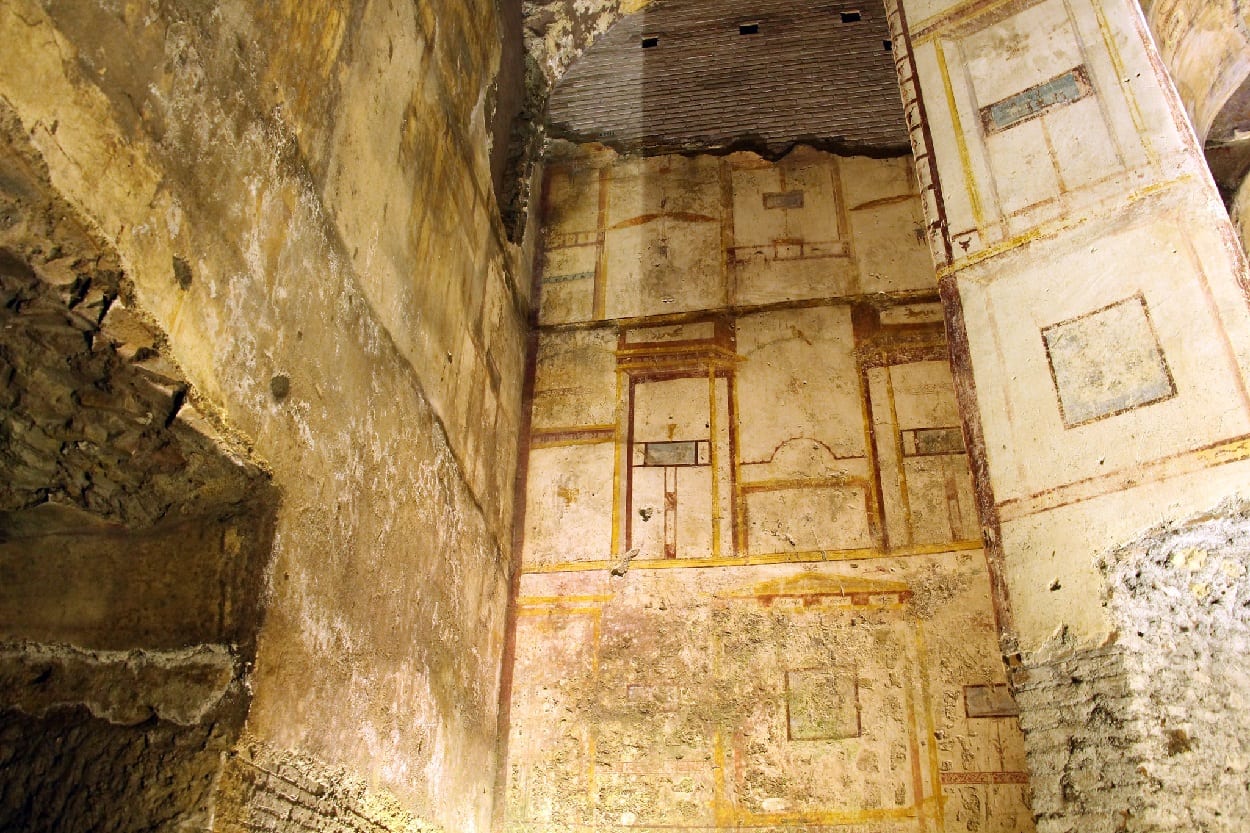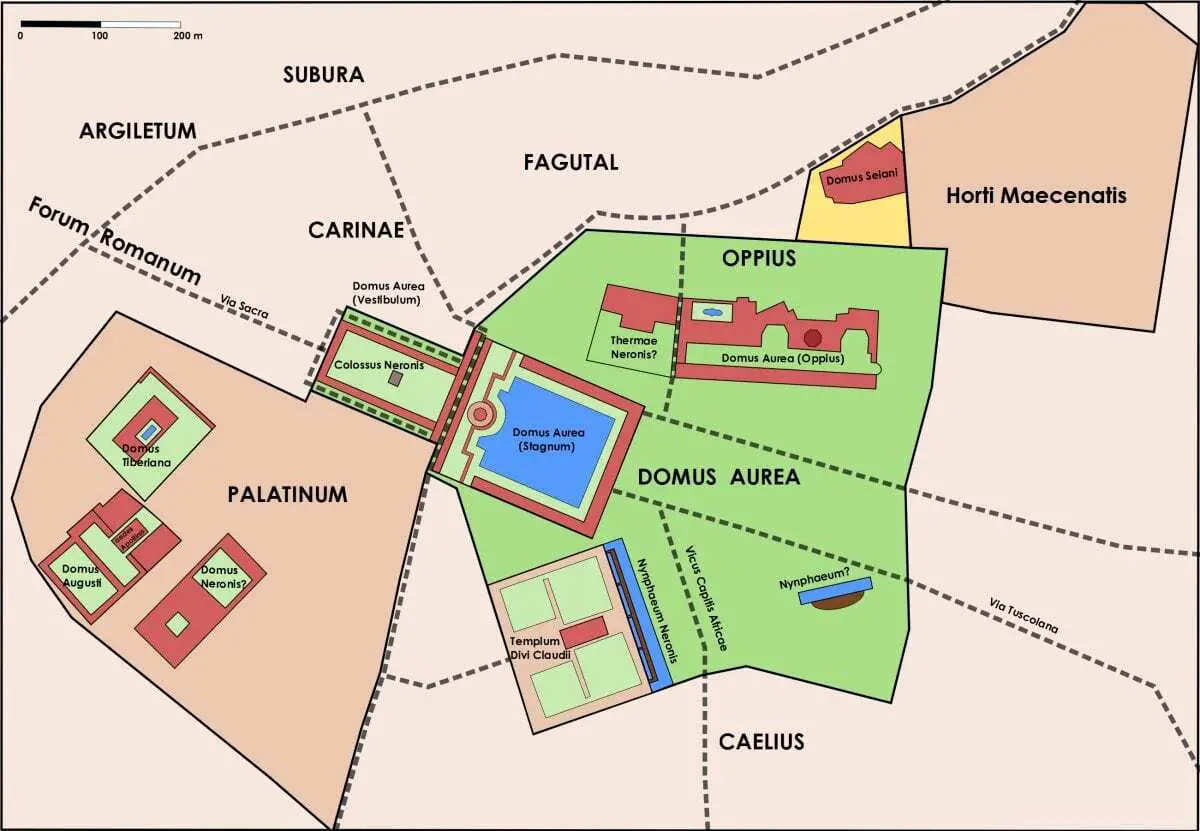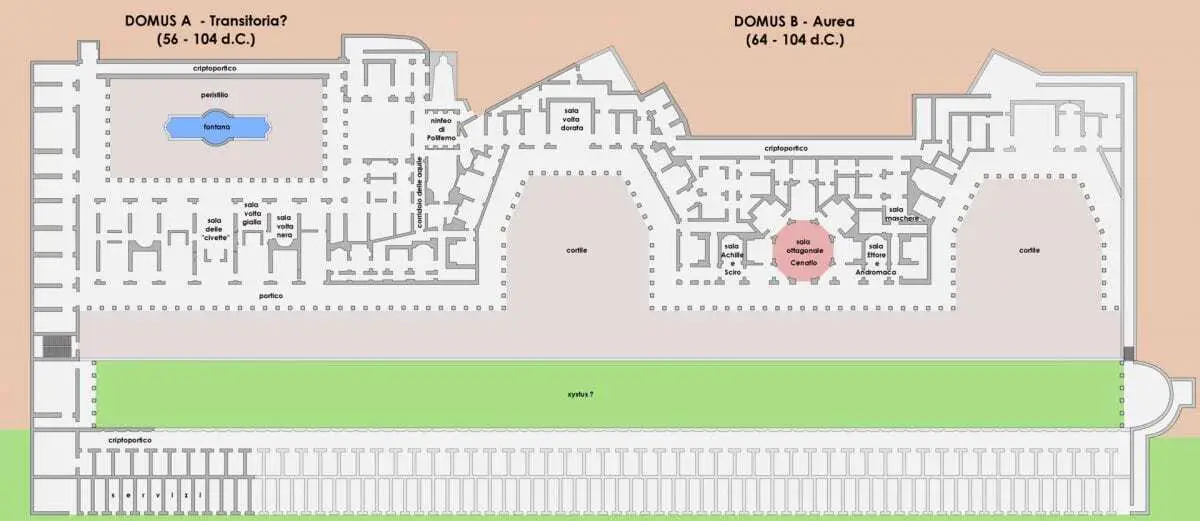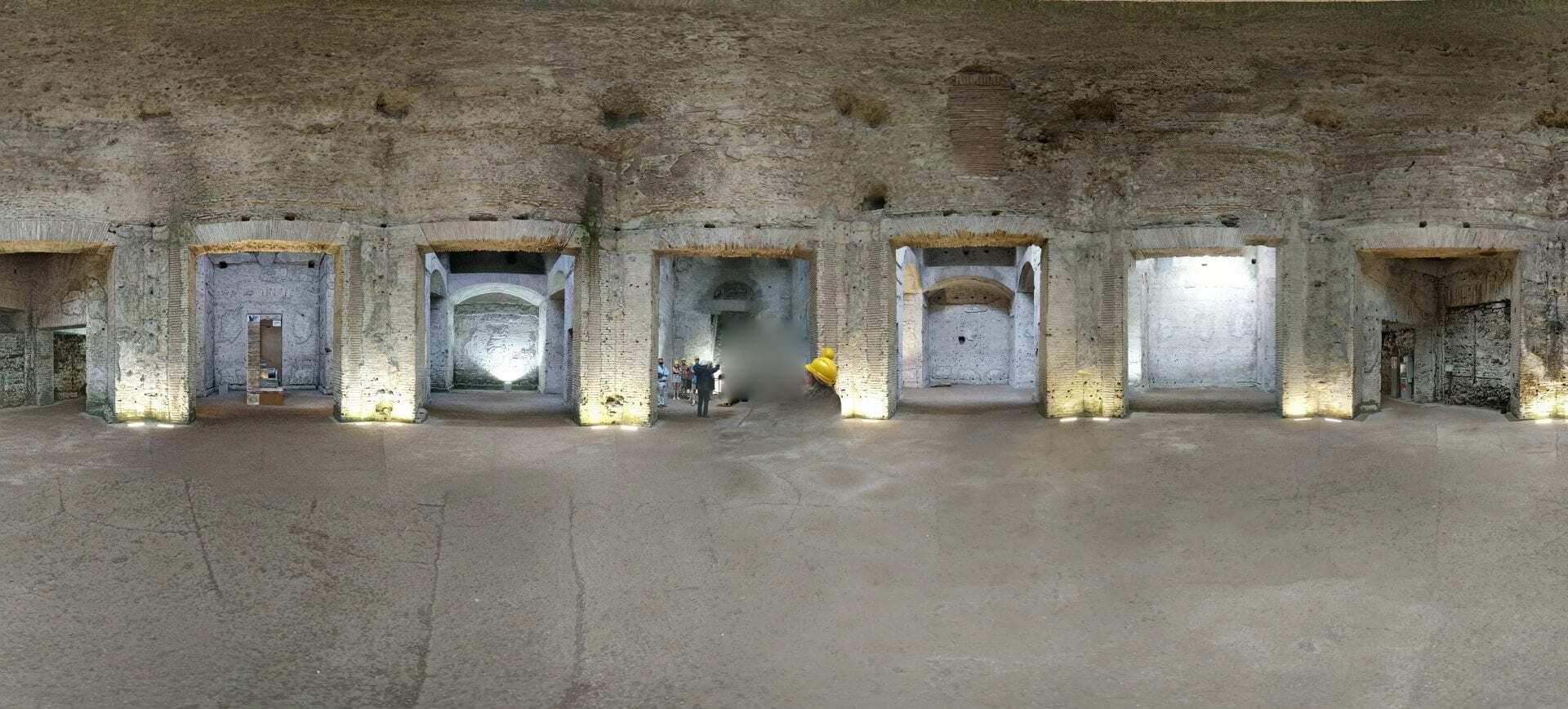The Golden House (Domus Aurea) was a Roman palace complex built on the slopes of the Palatine, Esquiline, Oppian and Caelian hills in Rome by Emperor Nero.
The palace was Nero’s personal entertainment complex, designed to host his lavish parties and infamous orgies in the maze of corridors and 300 rooms.
Construction began between 64 and 68AD in the Regione III Isis et Serap after the devasting fire of 64AD had destroyed large areas of Rome.
The master architect Severus and engineer Celer were tasked with designing the complex, whilst the interior wall paintings and stucco decorations were commissioned to Famulus.

The Golden House was furnished with the most lavish polished white marble flooring, mosaics and stuccoed ceilings faced with semi-precious stones and ivory veneers. The walls were covered in frescoed paintings often being themed and decorated with extensive gold leaf. When completed Nero was said to have said: ‘Now I can begin to live like a human being’.

Scholars believe the Golden House covered an area of up to 300 acres. The palace grounds were described by Suetonius as “ruinously prodigal” as it included groves of trees, pastures with flocks, vineyards and an artificial lake—rus in urbe, “countryside in the city”.
The architects designed two of the principal dining rooms to flank an octagonal court, surmounted by a dome (probably originally covered in glass mosaic) with a giant central oculus to let in light.

Celer and Severus created an ingenious mechanism, cranked by slaves, that made the ceiling underneath the dome revolve like the heavens, while perfume was sprayed and rose petals were dropped on the assembled diners (According to some accounts, perhaps embellished by Nero’s political enemies to make him appear vain and misappropriate funds).
Nero also commissioned a colossal statue of himself made of bronze outside the main palace entrance, possibly meant to represent Nero as the sun god Sol.
Golden House Legacy
Upon Nero’s death, the Golden House was stripped of assets by Nero’s successors. The grounds were filled in with earth and built over to make way for Vespasian’s Flavian Amphitheatre, the Baths of Trajan and the Temple of Venus of Rome – wiping Nero’s vanity project from public memory.
The real legacy was the influence the Golden House played in other building projects throughout the Roman empire. The technique for the Dome was an early example of concrete construction which would be replicated in many Roman buildings that followed.
Another innovation was the influence on the art of the future: Nero placed mosaics, previously restricted to floors, in the vaulted ceilings. Only fragments have survived, but that technique was to be copied extensively, eventually ending up as a fundamental feature of Christian art: the apse mosaics that decorate so many churches in Rome, Ravenna, Sicily and Constantinople.

The Golden House remained buried until the 15th century when a young Roman inadvertently fell through an opening in the Esquiline hillside and found themselves inside a painted subterranean chamber. The discovery instantly attracted Rome’s young artists, eager to see the vibrant frescos and mosaics which were a revelation to the eyes of the early Renaissance artists.
During recent renovation works at the end of 2018, experts stumbled upon a vaulted room richly decorated with panthers, centaurs, the god Pan, and a sphinx, believed to have been built between 65AD and 68AD.
The effect Famulus’s frescos in the Golden House had on Renaissance art can be seen in the painter Raphael’s decoration for the loggias in the Vatican, and the white walls, delicate swags, and bands of frieze – framed reserves containing figures or landscapes have returned at intervals influencing the history of art ever since.
Header Image – Panorama of Octagonal Room, Domus Aurea – Credit : Tyler Bell





